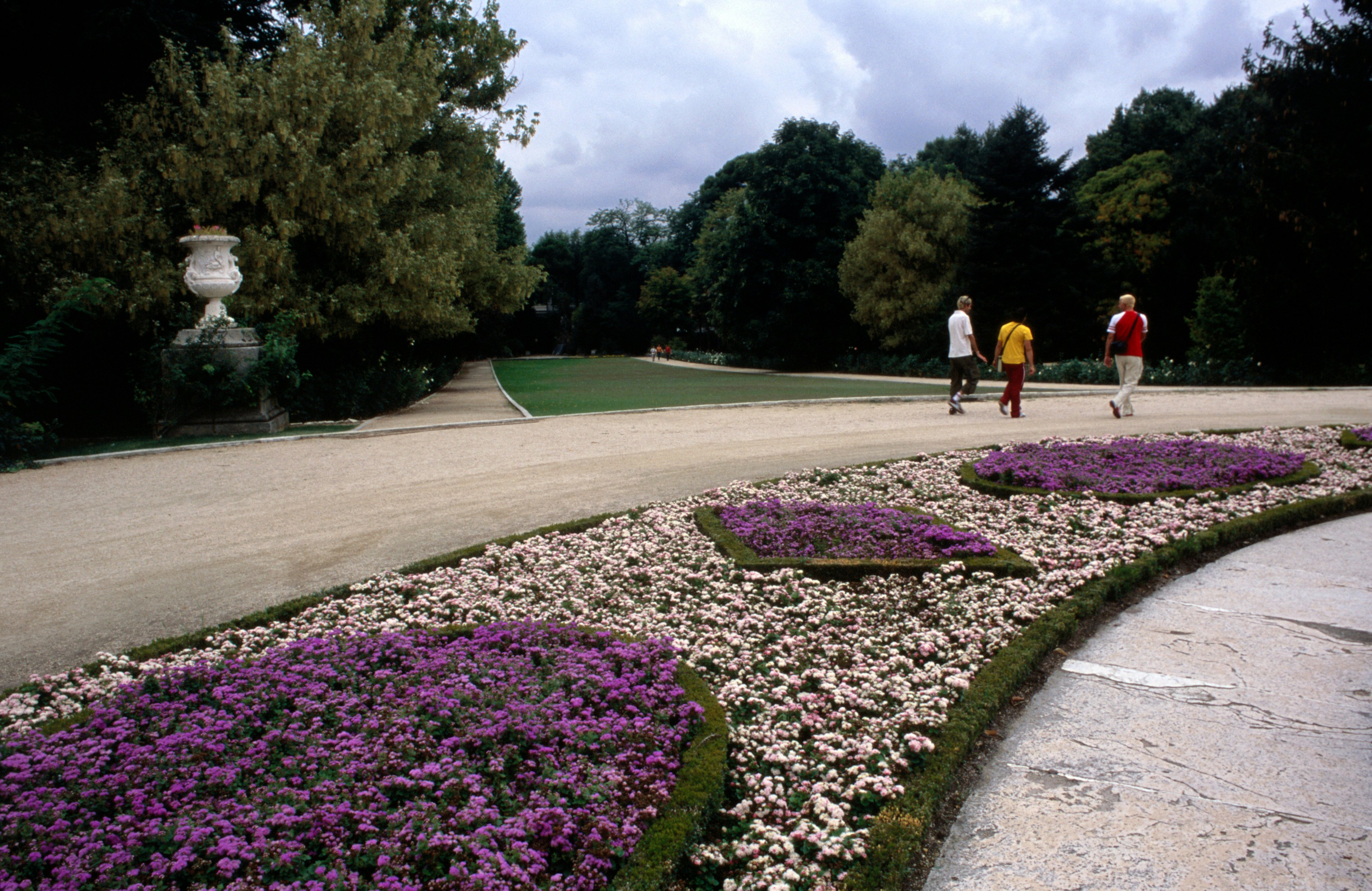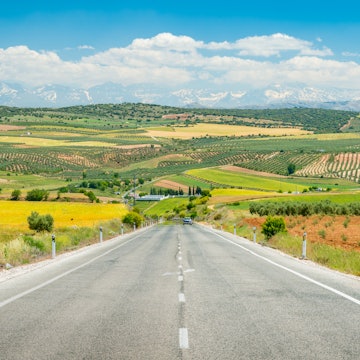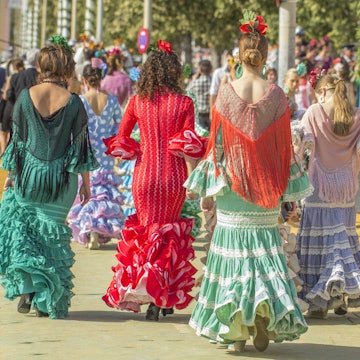

The stunning Crystal Palace in Madrid's Retiro Park @bravo1954/Getty Images
Madrid may be famous for its world-class museums and historical landmarks, but nature lovers would be pleasantly surprised to discover that the Spanish capital is also blessed with an abundance of green spaces. Where it lacks in city beaches, it makes up for in its over 6000 hectares (over 1400 acres) of green zones, representing about 18 square meters (7 miles) of public parks per inhabitant of the city. Some of Madrid’s most famous parks, once upon a time closed to the public, are a reminder of Spain’s long imperial history.
These parks are also ideal places to get a glimpse of daily local life, with residents taking languid strolls, enjoying weekend picnics or just taking in spectacular sunsets with panoramic views.

Parque del Buen Retiro
“El Retiro” is Madrid’s most famous park, and if you have limited time to explore the capital, this sprawling green landmark is not one to be missed. This expansive, 118-hectare (290 acre) park was once reserved for Spanish royalty and aristocracy until it was officially opened to the public at the close of the 19th century.
You can spend a whole day exploring Retiro because of its wide range of attractions. Apart from ornate fountains, statues of Spanish writers and heroes, gazebos and open air cafés, there are several landmarks to visit within the park grounds, including a central lake for rowing, the oldest tree in Madrid (planted in 1633) and the “The Fallen Angel” statue, or the world's only publicly commissioned statue of Lucifer. The Glass Palace is an architectural marvel of iron and glass, reflected magnificently on the waters of a surrounding lake. A stroll through the different areas of the park reveals various landscaping styles, from French-inspired manicured lawns, to craggy tree-lined pathways, and the romantic “La Rosaleda” rose garden, with over 4000 roses that are in full bloom from May to June.

El Real Jardín Botánico (Royal Botanical Gardens)
Plant aficionados would have a field day in this thriving paradise that is home to over 5000 species of plants. Situated right across the Prado Museum, Madrid's Botanical Gardens are a living library of flora from all corners of the world. The diversity of plant life here is impressive, from sky-high pine trees to thousands of flowers and herbs and even a special section exhibiting bonsai. In the spring locals make a beeline through its gates to see the rows of colorful tulips that light up the gardens.
These gardens were originally commissioned by King Charles III, a proponent of scientific knowledge, to be a complex dedicated to the natural sciences. The three-tiered terraces were even specifically designed to arrange plants according to the Linnaean classification system developed by the 18th century botanist Carolus Linnaeus.

Jardines de Sabatini
Sitting pretty at the north façade of the Royal Palace are the Sabatini Gardens — a visual feast of well-trimmed hedges shaped into geometric mazes, pools, cypress trees, marble sculptures and fountains, all formally arranged in the Neoclassical style. These gardens were originally created as an extension of the Palace, and were only opened to the public by King Juan Carlos I in 1978.
The best time to visit the Sabatini Gardens is at dusk — this is one of the best spots to watch the sunset over Casa de Campo, crowned by the glowing Palace walls. One could imagine being an old monarch witnessing the day’s close, with your sunset-kissed kingdom by your feet.

Campo del Moro
While the main entrance of Campo del Moro — or “Field of the Moor” — features polished English-style gardens with wide lawns surrounding Neoclassical fountains, its adjacent pathways reveal a more rugged setting. Canopies of trees tower over unkempt greenery and secret little hideaways among thorny rose bushes, offering an interesting contrast to the perfectly manicured lawns nearby. You may even bump into some friendly peacocks strolling about.
This green space was originally created in the 19th century with Queen Maria Cristina as the resident monarch, who was inspired by the connection between Romanticism and nature. Yet Campo del Moro takes its name from something quite unrelated to any romantic notion — after the death of King Alfonso VI in the 12th century, this was the field where Moorish troops camped out in as General Ali Ben Yusuf attempted to reconquer Madrid by attacking it from the banks of the Manzanares River.

Casa de Campo
Spanning a massive 1535 hectares (around 3800 acres), Madrid's largest public park was originally part of King Philip II’s estate in the 16th century, and just like Retiro and the Sabatini Gardens, it was not open to the public until the 1930s.
Stepping into Casa de Campo, or “Country House,” feels more like entering a forest – King Ferdinand VI had in fact declared it to be a Royal Forest. Such expansive grounds are an idyllic setting for outdoor sports such as cycling, jogging, kayaking and even swimming in the big public pool that is open in the summer. The park’s large lake, accessed easily via the Lago metro stop, is a relaxing setting for all day dining, with several restaurants, bars and open air terraces at the lake’s borders. Casa de Campo also features the Parque de Atracciones amusement park and Madrid Zoo Aquarium.

Parque del Oeste
This green oasis spread over 100 hectares is a stark contrast to the busy Moncloa station just outside its perimeter. Parque del Oeste is perfect for long languid strolls and bird spotting amidst the poplar groves, ginkgo trees and an ancient cedar tree nicknamed “El Abuelo” (“The Grandfather”). At the southern end is a local gem, the Ramón Ortiz Rose Garden which hosts the international competition of new roses every year.
For spectacular views over the city, this is the access point of the Teleferico de Madrid (Madrid Cable Car) that connects to Casa de Campo. The aerial cable ride offers stunning views of Madrid and Casa de Campo below. Parque del Oeste's most important monument is the Templo de Debod, an ancient Egyptian temple dedicated to the goddess Isis and the god Amun. This temple was gifted by the Egyptian government to Spain for its help in restoring temples in Upper Egypt. This is another fantastic spot to watch a glorious sunset, particularly as the temples and orange-tinted skies are mirrored in the surrounding pools.
You might also like:
Where to find Madrid’s best neighborhoods
6 great day trips from Madrid
When to go to Madrid
















